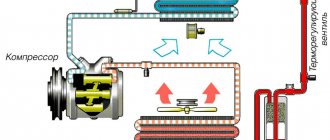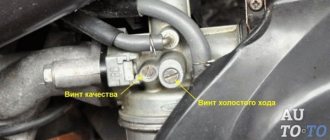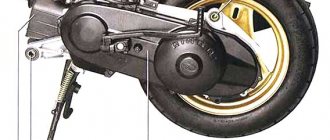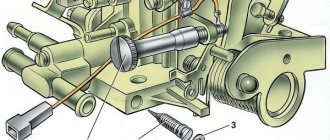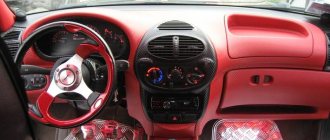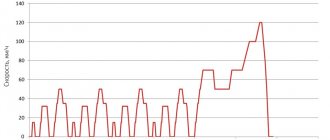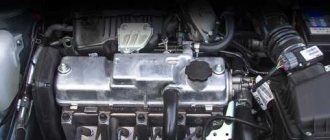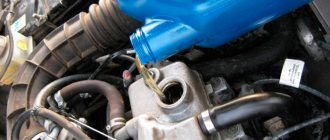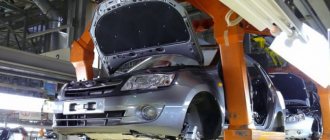The production of the popular domestic Lada Granta started in 2011. It was this car that became the next after the Lada Kalina, meeting the new needs of modern drivers. However, the value of the parameter on which the vehicle’s efficiency depends—the Lada Grant’s fuel consumption—remains always relevant. The design features of the engine and fuel system of a car determine the dependence of gasoline consumption on many factors, such as fuel quality, wear of engine parts, quality of lubricants, etc.
A competitive car in an affordable price category is available in several trim levels: Luxury, Standard and Normal. AvtoVAZ often installs an automatic transmission on Grant cars, and some modifications are equipped with a 16-valve engine instead of the standard 8-valve.
The structure of the Lada Granta fuel system and its features
The Lada Granta fuel supply system is designed to transport fuel to the car engine in the form of a working mixture consisting of gasoline and air. Each section of the system performs certain functions:
- 1. The tank is used to store fuel reserves;
- 2. The air filter cleans the air, which, mixed with fuel, enters the combustion chamber through the air duct;
- 3. The throttle valve controls the air pressure;
- 4. The submersible fuel pump supplies fuel from the tank, cleaning it through a mesh filter;
- 5. The fuel module, consisting of a fuel level sensor and a pressure regulator, is combined with a submersible electric pump to control fuel consumption.
- 6. The intake pipe and receiver serve to pump air to the intake valves.
- 7. The pressure regulator ensures uninterrupted fuel pressure in the system.
- 8. The adsorber, consisting of a container with activated carbon, absorbs gasoline vapors and, if necessary, supplies them to the intake manifold by blowing.
Power supply system LADA GRANTA
The 50-liter gasoline tank is made of special plastic and attached to the bottom of the car using steel clamps. Gasoline is supplied thanks to the fuel pump, which, under the influence of a signal from the ECU, starts working when the car’s ignition is turned on. Passing through the module into the coarse filter, the fuel flows through the tee to the fuel rail, where the excess passes through the regulator and goes back into the tank.
A special bypass valve (pressure regulator) creates constant pressure in the fuel line, due to which the fuel passes through a fuel filter made of special paper and enters the ramp, and then to the injectors and into the engine.
Components of the fuel system of Lada Granta VAZ-2190 cars
The function of the fuel supply system is to ensure that the required amount of fuel is supplied to the Lada Granta Liftback engine in all operating modes.
Fuel is supplied to the engine by injectors installed in the intake pipe. An electric fuel pump installed in the fuel tank supplies fuel through the inline fuel filter and the fuel supply line to the injector rail. The fuel pressure regulator maintains a constant pressure difference between the inlet pipe and the injection rail.
The fuel pressure supplied to the injectors is within 300±6 kPa when the engine is not running. Excess fuel beyond that required by the injectors is returned to the fuel tank through a separate drain line.
Before servicing the fuel equipment of the Lada Granta Liftback, it is necessary to relieve the pressure in the fuel supply system. When disconnecting fuel lines, do not allow fuel to spill. To do this, wrap the ends of the tubes with a rag.
Engage neutral gear and brake the vehicle with the parking brake. Disconnect the wires from the electric fuel pump; to do this, tilt the rear seat cushion forward and remove the electric fuel pump flap.
Start the engine and let it idle until it stops due to fuel exhaustion. Turn on the starter for 3 seconds to relieve pressure in the pipelines. After this, you can safely work on the fuel supply system.
After releasing the pressure and completing the work, connect the wires to the electric fuel pump.
The Lada Granta fuel system uses a turbine type fuel pump. The pump supplies fuel from the fuel tank through the main fuel filter to the injector rail. Excess fuel is returned to the gas tank through a separate drain line.
The electric fuel pump is switched on by the controller via a relay. When the ignition key is set to the “IGNITION” or “STARTER” position after being in the “OFF” position for more than 15 seconds, the controller energizes the relay for 3 seconds to create the required fuel pressure in the injector rail.
If the engine does not start cranking during this time, the controller turns off the relay and waits for cranking to begin.
After it starts, the controller again turns on the relay installed under the underbody near the fuel tank 2. The filter is built into the supply line between the electric fuel pump and the fuel rail.
The Lada Granta Liftback filter has a steel body with threaded fittings at both ends. The filter element is made of paper and is designed to trap particles that could cause problems with the injection system.
The injector of the distributed injection system is an electromagnetic device that meteres the supply of fuel under pressure into the engine intake pipe. The injectors are secured to the ramp using spring clamps 4.
The upper and lower ends of the nozzles are sealed with O-rings 6, which must always be replaced with new ones when removing and installing nozzles.
An injector that is stuck partially open will cause a loss of pressure after the engine is turned off, so some engines will experience an increase in crank time.
In addition, an injector with a stuck valve can cause hot ignition, as some fuel will enter the engine after it is turned off.
Fig. 16. Installation of fuel injector Lada Granta Liftback
1 – inlet valve; 2 – nozzle; 3 – plug connector; 4 - clamp; 5 - injector ramp; 6 – sealing rings; 7 – inlet pipe.
Fig. 15. Lada Granta fuel supply system with distributed injection
1 – fitting for monitoring fuel pressure; 2 - injector ramp; 3 – bracket; 4 – fuel pressure regulator; 5 - electric fuel pump; 6 - fuel filter; 7 – fuel drain line; 8 – fuel supply line; 9 – nozzles.
The Lada Granta fuel supply system includes an electric fuel pump 5, a fuel filter 6, fuel lines (supply and drain), an injector ramp 2 with fuel injectors, a fuel pressure regulator 4 and a fuel pressure control fitting 1.
Fig. 17. Lada Granta Liftback engine fuel supply diagram with fuel injection system
1 – nozzles; 2 – fitting plug for monitoring fuel pressure; 3 – injector ramp; 4 – bracket for fastening fuel pipes; 5 – fuel pressure regulator; 6 – adsorber with solenoid valve; 7 – hose for suction of gasoline vapors from the adsorber; 8 – throttle assembly; 9 – two-way valve; 10 – gravity valve; 11 – safety valve; 12 – separator; 13 – separator hose; 14 – fuel tank plug; 15 – filling pipe; 16 – filling pipe hose; 17 – fuel filter; 18 – fuel tank; 19 – electric fuel pump; 20 – fuel drain line; 21 – fuel supply line.
The main reasons causing excessive fuel consumption of Lada Granta
Among the reasons why the fuel consumption of a Lada Granta car is unreasonably high are:
- subjective, depending on driving style;
- objective, related to the features and technical condition of the machine.
In the first case, excessive consumption of gasoline is caused by:
- sudden braking and acceleration;
- poorly warmed up engine;
- ill-conceived tuning that worsens the aerodynamics of the car;
- machine overload;
- operating a vehicle in mountainous areas;
- driving too fast.
Engine LADA GRANTA
Among the objective reasons are:
- wear of engine parts;
- breakdowns or failure of elements of the vehicle’s power system;
- insufficient tire pressure;
- Brake failure, creating excessive friction and resistance.
- air conditioning operation;
- damage to the wheel bearing, causing increased resistance when driving.
Replacing the fuel pump for Lada Granta (VAZ Granta)
Stable, reliable, uninterrupted operation of the Lada Kalina engine is ensured by a complex of systems, the most significant of which is the fuel system. It includes many mechanisms that act harmoniously and complement each other, so when even the smallest part fails, it negatively affects the operation of the entire fuel system.
Today we will talk about how to replace the fuel pump mesh on Kalina, and also reveal the most important issues regarding the fuel pump. So, let's go.
Real fuel consumption of Lada Granta: reviews from owners
No matter how the manufacturer declares the parameters of the optimal fuel consumption of the Lada Grant, the real picture can always be found out from those who have been using this car for many years. Depending on the type of engine, the car’s fuel consumption per 100 km has the following values (combined cycle/highway/city):
Engines LADA GRANTA
According to reviews from Lada Granta owners, the average fuel consumption per 100 km in the highway/city/combined cycle ratio is:
- on the highway from 5.5 to 6.5 liters;
- in the city from 9 to 11.8 l;
- mixed cycle from 7.5 to 8.1 l.
These indicators are relative, since in practice each car is operated in certain climatic conditions and has its own technical characteristics.
Features of draining gasoline from the Lada Granta tank
The fact is that you won’t be able to drain the fuel using the “old-fashioned” method through the neck.
The reason for this is the low location of the fuel tank, as well as the specific design of the neck. The same applies to other modern VAZ models, as well as foreign cars produced since the 90s.
We tried this method, it is drained only with a thin hose and no more than “half a bucket”, depending on the current volume of filling the gas tank.
Method 1: Using the fuel line under the hood
In this situation, the simplest method is to use a fuel channel.
- To begin with, you will need to unscrew the nipple, which is located at the end of the injector ramp.
The nipple has been unscrewed, marked with an arrow
Put the hose on, the other end into the container
Just keep in mind that prolonged operation of the pump in this mode can lead to complete discharge of the battery. So constantly monitor this parameter.
Factory fuel filter
You can also use the area after the fuel filter to drain. To do this, you need to dismantle the fuel filter from the injector side, and put a hose on its outlet, which is lowered into the drain container.
Method 2. Removing the gasoline pump
There is another option that may be easier for many people. We are talking about completely removing the gasoline pump. This is done by raising the rear row seat, after which you need to unscrew the pump mounts. Next, you get direct access to the fuel, so you can pump it out using the traditional method.
This is a fairly simple procedure that does not require prior preparation. In the case of the Lada Granta, the entire fuel module will have to be dismantled.
- To do this, the rear seat cushion is folded down.
- After which the parts of the mat, previously cut by the manufacturer, are raised. Under them you will find four screws that secure the cover. They will have to be unscrewed. A Phillips screwdriver is used for this purpose.
Removing the protective cover of the fuel pump
Removing the chip in the photo is indicated by an arrow
Carefully remove the hose with pliers
We use a hammer and a flat-head screwdriver
Carefully, without haste
Make sure that fuel does not spill out of the gasoline pump. Just place a small cloth under it.
Assembly is carried out in reverse order. If necessary, the sealing ring can be replaced with a new one, otherwise the smell of gasoline will be felt in the cabin. The arrow drawn on the fuel module cover should point to the rear of the car. Also follow the readings on the fitting arrows, which will tell you the direction of fuel movement.
You should only drain gasoline in the most extreme cases, since you are interfering with the operation of the mechanism. This may be regarded by the manufacturer as a violation of warranty requirements, especially if the work was performed poorly, resulting in damage to some parts. Therefore, try to refuel only at proven gas stations, and constantly monitor the amount of fuel along the way.
Yes, I completely agree, sometimes when they fill up with gasoline, you drive 1 km away from the gas station and begin to sneeze, the traction disappears and there is practically no speed, sometimes it helps that you can fill in twice as much good gasoline at another gas station and stir it, you can go, in general, for everyone I have favorite dressings, as I noticed)
I didn’t think there would be so many problems if I had to drain all the gasoline from the tank. Although no one is insured, with our tankers.
Draining gasoline from a gas tank is an event that is faced not only by lovers of easy money.
The quality of fuel in Russia is such that even a trustworthy and honest motorist may encounter such a need.
A drop in engine power, erratic operation, extraneous sounds, an unpleasant odor, a changed color of exhaust gases - many symptoms indicate that low-quality fuel was poured into the gas tank.
Operating a vehicle in such a situation is not recommended, in fact, it is even prohibited, as the risk of deposits in the fuel lines and carbon deposits forming on the valves and inside the cylinders increases.
All this is fraught with serious damage, the elimination of which will require considerable financial investments. There is only one correct solution - stopping and draining the low-quality product. How to do it? Let's find out in our article.
How to reduce fuel consumption on a Lada Granta
To reduce fuel consumption on the Lada Granta, it is recommended to adhere to the following rules:
- 1. Drive the car in normal mode without speeding or sudden maneuvers;
- 2. The driving speed should always correspond to the engine speed, which will protect the engine from overload as much as possible. There is a rule of intelligent driving - the less you use the brakes, the more fuel you save. This means don't rush to the changing traffic light to brake hard before the stop line. The driver must learn to calculate the speed of the car in certain driving situations;
- Use high-quality lubricants and fuel for the engine;
- Regularly and promptly carry out maintenance and repair of the engine and fuel system in a timely manner.
Draining gasoline through the pump hatch
The option described in this subsection will not allow you to completely drain all the gasoline in the tank. However, it is much safer than the above, although the procedure itself takes noticeably longer.
In this case, the fuel is removed while located directly in the cabin. This is best done in the fresh air and with the doors open.
Take all precautions:
- do not smoke;
- turn off the power;
- do not wear clothes made of synthetic fiber;
- Make sure you have a fire extinguisher at the ready.
During operation, quite a lot of gasoline vapor is generated, which in the limited space of the cabin can simply ignite. Be sure to ask someone to cover you just in case.
The procedure is as follows:
- remove the back seat from the interior;
- open the hatch located underneath;
- remove the power terminal from the fuel pump;
- after unscrewing the bolts, carefully pull out the assembly (be very careful with the float - it breaks easily);
- remove the pump;
- pump out the fuel through the opened hole using a rubber bulb;
- Upon completion, return the unit, hatch and seats to their place and thoroughly ventilate the interior.
